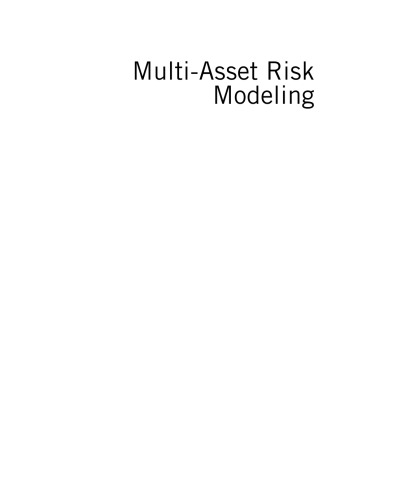Financial services firms suffered significant losses brought on by one of the deepest crises ever to hit the financial services industry. As a result, risk modeling and man- agement, loan valuation methods, capital allocation, and governance structures are shaken top to bottom. Fallout from the debt crisis continues to afflict most banks. Credit is still tight at the time of this writing. Banks, particularly those with signifi- cant levels of illiquid and difficult to sell assets, were finding it difficult to raise funds from traditional capital suppliers. In response, many institutions exited capital intensive, structured deals in an effort to deleverage and, notably, move away from international operations to concentrate on domestic business. The debt crisis began when loan incentives, coupled with the acceleration in housing prices, encouraged borrowers to assume mortgages in the belief that they could refinance at favorable terms. Once prices started to drop, refinancing became difficult. Defaults and foreclosures increased dramatically as easy terms expired, home prices failed to go up, and interest rates reset higher. Foreclosures accelerated in late 2006, triggering a global financial crisis. Loan activities at banks froze while the ability of corporations to obtain funds through commercial paper dropped sharply. The expression a perfect storm, a “once in a hundred years” event, found its marker. The same could be said for Hurricane Sandy, Black Monday, and the October 1987 crash. The CEO of Lehman Brothers said the firm was also the victim of “the perfect storm”—yet Lehman did not resist the lure of profits, leveraged balance sheets, and cheap credit. At Goldman Sachs, credit swaps created four billion dollars in profits. The financial modeling that helped produce results at these two investment banks were cutting edge, yet it appears that Lehman, AIG, and other profit takers amassed scant few algorithms to preserve capital protection against unexpected macroeco- nomic collapse.
چکیده فارسی
شرکتهای خدمات مالی متحمل زیانهای قابل توجهی شدهاند که یکی از عمیقترین بحرانهایی است که تا کنون به صنعت خدمات مالی ضربه زده است. در نتیجه، مدلسازی و مدیریت ریسک، روشهای ارزشگذاری وام، تخصیص سرمایه و ساختارهای حاکمیتی از بالا به پایین متزلزل میشوند. پیامدهای بحران بدهی همچنان گریبانگیر اکثر بانک ها است. اعتبار هنوز در زمان نوشتن این مقاله کم است. بانکها، بهویژه آنهایی که سطح قابلتوجهی از نقدینگی و فروش داراییهایشان دشوار است، جذب سرمایه از تامینکنندگان سنتی سرمایه با مشکل مواجه بودند. در پاسخ، بسیاری از مؤسسات در تلاش برای کاهش اهرم و به ویژه دور شدن از عملیات بینالمللی برای تمرکز بر تجارت داخلی، از معاملات ساختارمند و سرمایهبر خارج شدند. بحران بدهی زمانی آغاز شد که مشوق های وام، همراه با شتاب در قیمت مسکن، وام گیرندگان را تشویق کرد تا وام مسکن را با این باور که می توانند با شرایط مطلوب بازپرداخت کنند. هنگامی که قیمت ها شروع به کاهش کردند، تامین مالی مجدد دشوار شد. با انقضای شرایط آسان، عدم افزایش قیمت مسکن و بازنشانی نرخ های بهره بالاتر، نکول ها و سلب مالکیت به طور چشمگیری افزایش یافت. اقامه دعوی در اواخر سال 2006 شتاب گرفت و باعث ایجاد یک بحران مالی جهانی شد. فعالیت های وام در بانک ها متوقف شد در حالی که توانایی شرکت ها برای دریافت وجوه از طریق اوراق تجاری به شدت کاهش یافت. عبارت طوفان کامل، رویدادی «در هر صد سال یک بار» نشانه خود را پیدا کرد. همین را می توان در مورد طوفان سندی، دوشنبه سیاه و سقوط اکتبر 1987 گفت. مدیر عامل Lehman Brothers گفت که این شرکت نیز قربانی "طوفان کامل" شده است - اما Lehman در برابر فریب سود، ترازنامه های اهرمی و اعتبار ارزان مقاومت نکرد. در گلدمن ساکس، مبادلات اعتباری چهار میلیارد دلار سود ایجاد کرد. مدلسازی مالی که به تولید نتایج در این دو بانک سرمایهگذاری کمک کرد، بسیار پیشرفته بود، با این حال به نظر میرسد که Lehman، AIG و سایر سودآوران الگوریتمهای کمی را برای حفظ حفاظت از سرمایه در برابر سقوط غیرمنتظره اقتصاد کلان جمعآوری کردهاند.
ادامه ...
بستن ...
Author(s): Glantz, Morton;Kissell, Robert;Mun, Johnathan;Paul, Karamjeet
Publisher: Academic Press, Year: 2014
ISBN: 9780124016903,0124016901
ادامه ...
بستن ...










